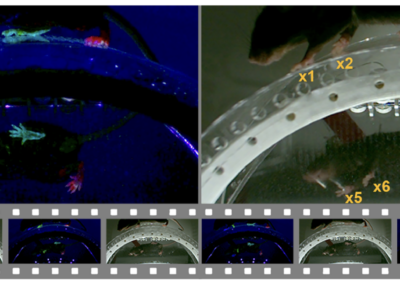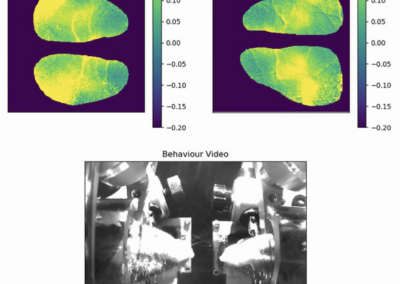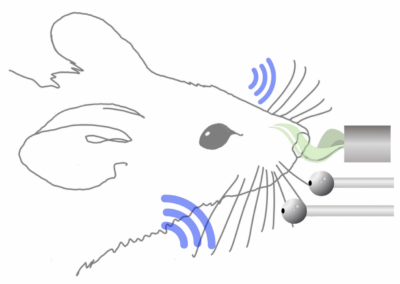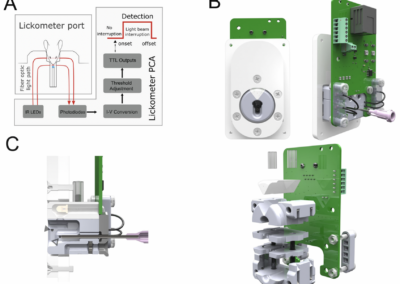In a recently published article (Erskine et al., 2019), The Schaefer lab at the Francis Crick Institute introduced their new open-source project called AutonoMouse. AutonoMouse is a fully automated, high-throughput system for self-initiated conditioning and behavior tracking in mice. Many aspects of behavior can be analyzed through having rodents perform in operant conditioning tasks. However, in operant experiments, many variables can potentially alter or confound results (experimenter presence, picking up and handling animals, altered physiological states through water restriction, and the issue that rodents often need to be individually housed to keep track of their individual performances). This was the main motivation for the authors to investigate a way to completely automate operant conditioning. The authors developed AutonoMouse as a fully automated system that can track large numbers (over 25) of socially-housed mice through implanted RFID chips on mice. With the RFID trackers and other analyses, the behavior of mice can be tracked as they train and are subsequently tested on (or self-initiate testing in) an odor discrimination task over months with thousands of trials performed every day. The novelty in this study is the fully automated nature or the entire system (training, experiments, water delivery, weighing the animals are all automated) and the ability to keep mice socially-housed 24/7, all while still training them and tracking their performance in an olfactory operant conditioning task. The modular set-up makes it possible for AutonoMouse to be used to study many other sensory modalities, such as visual stimuli or in decision-making tasks. The authors provide a components list, layouts, construction drawings, and step-by-step instructions for the construction and use of AutonoMouse in their publication and on their project’s github. This research tool was created by your colleagues. Please acknowledge the Principal Investigator, cite the article in which the tool was described, and include an RRID in the Materials and Methods of your future publications. RRID:SCR_021462 Read more here! For more details, check out this youtube clip interview with Andreas Schaefer, PI on the project. The github for the project’s control software is located here: https://github.com/RoboDoig/autonomouse-control and for the project’s design and hardware instructions is here: https://github.com/RoboDoig/autonomouse-design. The schedule generation program is located here: https://github.com/RoboDoig/schedule-generator Check out projects similar to this!AutonoMouse
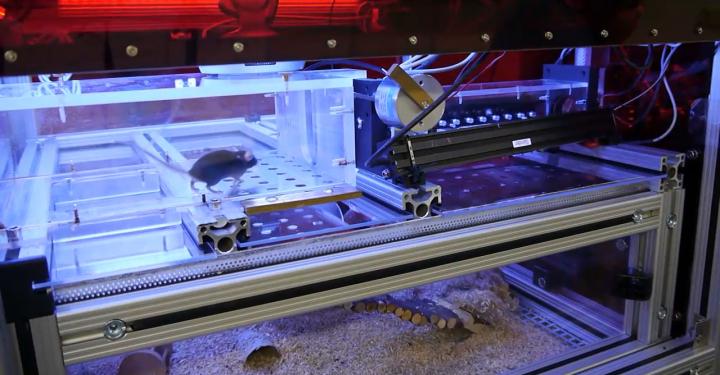

Paper

Github
Have questions? Send us an email!

